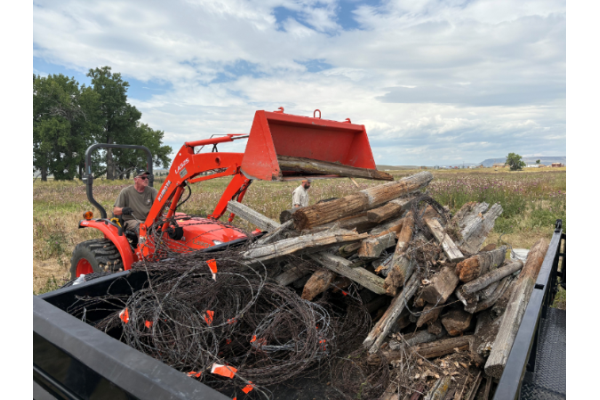EDGEFIELD, S.C. — Members of the Montana NWTF State Chapter Board gathered near Great Falls for their annual meeting, reflecting on a year of conservation wins and planning for the road ahead. In addition to setting new goals and celebrating recent successes in fundraising and forest stewardship, the board welcomed Bridger Line, NWTF’s new cooperative biologist for western Montana, and got their hands dirty for conservation.
Following the meeting, state board members and volunteers from the NWTF Great Falls Chapter rolled up their sleeves for a conservation workday in partnership with Montana Fish, Wildlife and Parks. The group worked on a private property enrolled in Montana’s Block Management Program, which provides public hunting access on private lands — an essential tool for preserving Montana’s outdoor heritage.
The workday took place on the property of Rod Duty, a retired game warden and conservation-minded landowner who is passionate about supporting wildlife and welcoming hunters onto his land. The parcel, which features a mile-long stretch of the Missouri River, offers excellent habitat for deer, upland birds and more, and provides access for anglers as well. Since inheriting the property, Duty has taken a hands-on approach to habitat restoration, making him an ideal partner for NWTF-led conservation efforts.
“The Great Falls Chapter had been looking for opportunities to get involved in hands-on conservation,” said Trenton Farmer, local game warden with Montana Fish, Wildlife and Parks. “Through programs like Block Management, we can form relationships with private landowners, and it is a win for everybody.”
Volunteers removed over three-quarters of a mile of old perimeter fencing and removed four internal haystack yard fences. These degraded, sagging fences posed a threat to wildlife — particularly pronghorn antelope and deer — and presented hazards for hunters and bird dogs that frequent the property. Their removal enhances habitat connectivity and improves the overall huntability of the property.
After a productive day in the field, the Duty family treated the crew to a hearty lunch of elk steak and cheese sandwiches, garden-fresh veggies and homemade rhubarb cake — a perfect end to a day of service and stewardship.
“Through the volunteer efforts, we not only improved the wildlife habitat and safety for hunters, but we’re fostering a relationship with conservation motivated landowners which may lead to additional projects to promote quality wildlife habitat,” said David Nikonow, NWTF district biologist for Montana, Wyoming and Colorado.
This collaborative event highlights the NWTF’s commitment to building partnerships, improving access and delivering conservation on the ground — ensuring healthy habitats for wild turkeys and other wildlife while supporting hunting traditions for generations to come.
About the National Wild Turkey Federation
Since 1973, the National Wild Turkey Federation has invested over half a billion dollars into wildlife conservation and has positively impacted over 24 million acres of critical wildlife habitat. The NWTF has also invested over $10 million into wild turkey research to guide the management of the wild turkey population and to ensure sustainable populations into perpetuity. The organization continues to deliver its mission by working across boundaries on a landscape scale through its Four Shared Values: clean and abundant water, healthy forests and wildlife habitat, resilient communities, and robust recreational opportunities. With the help of its dedicated members, partners and staff, the NWTF continues its work to provide Healthy Habitats. and Healthy Harvests. for future generations.
Read the full article here




